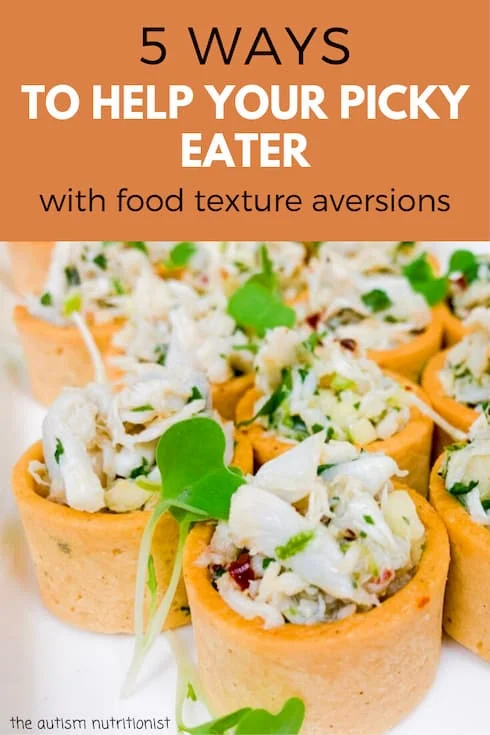
The way a food feels matters to kids. For kids with sensory processing issues and very often kids with autism, this is especially true. Texture can be a touchy issue, one that’s often at the root of picky eating behaviors.
As a parent, you’re concerned about picky eating and want your child to learn to eat new foods and a greater variety of foods. So it’s no wonder you want to know: how can you help your child who struggles with certain textures and touches feel differently about food?
This article will provide strategies to help a picky eater with sensory food issues and food texture aversions learn to eat all sorts of food textures and types.
5 Ways To Help Picky Eaters Overcome Food Texture Aversions
1. Talk to your child about the sensations different textures bring
Does the food poke their mouth? Is the food rough like sandpaper or smooth like the counter? Can they feel it break apart or stretch? Is it light like a feather or heavier like a book? Is it round like a ball?
2. Get the right language
Understanding textures can improve texture aversions. Give your child the right language to speak about a food’s texture. Use the words below to replace more negative descriptors like slimy, icky, or gross.
-
crunchy
-
smooth
-
firm
-
dry
-
wet
-
soft
-
mushy
-
tender
-
sticky
-
smooth
-
creamy
-
crumbly
3. Make connections
What does the texture remind them of? Maybe a favorite food, an animal, or a fun place they visited. Creating connections to preferred food and positive experiences can open your child’s mind, make positive connections, and better understand what to expect from eating.
4. Make it a game
Make new foods fun: Who can crunch the loudest? Who can squish more blueberries? Create fun interactions where there is no pressure or expectation to eat. These sorts of interactions create positive experiences while providing sensory exposure that actually desensitizes the body and helps picky eaters eat new foods.
5. Create comparisons
Select a variety of foods with different textures. Use the suggested texture words in tip 2 to describe them. Rank different foods in terms of their texture. Find foods that are very soft, a little soft, firm, and hard. Often kids with texture aversions experience non-preferred textures in extremes. This exercise will give your child a frame of reference and help them to better understand food textures
Recap
Sometimes your picky eater isn’t turned off by what a food is, but how it feels. Texture and feel matter when it comes to eating, especially for kids on the autism spectrum or with sensory food aversions. You can help your child who struggles with certain food textures feel differently about food through education, fun activities, and desensitization?
Homework
Begin incorporating the above tips into your daily routine. Start with just one per week. When that activity is part of your routine, introduce another. Don’t be afraid to explore different textures and foods. Keep activities fun and avoid pressuring your child to eat! This is just about learning!



0 Comments